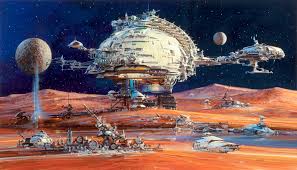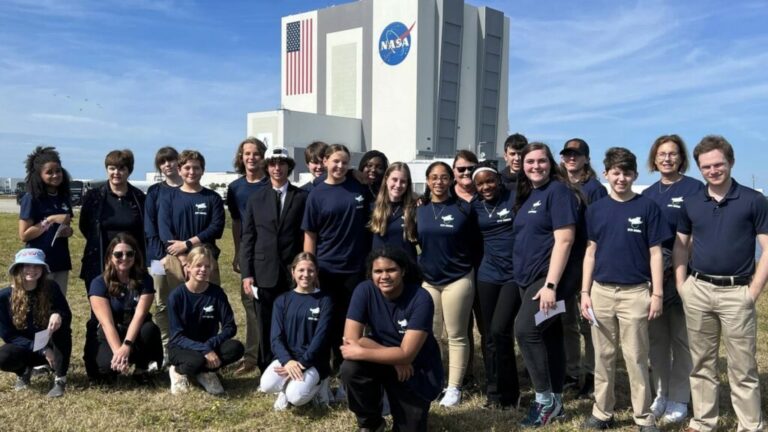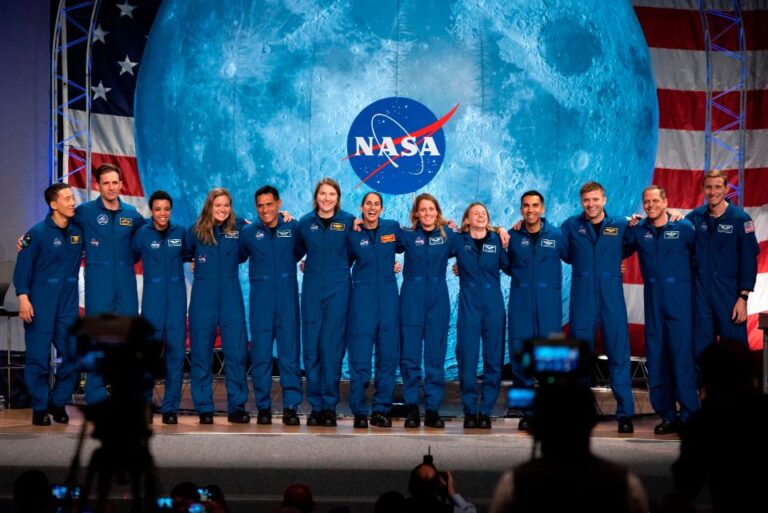
NASA is currently working on a wide range of innovative projects aimed at advancing space exploration, science, and technology. These projects span missions to explore our solar system, the development of new technologies for human spaceflight, and cutting-edge research in Earth and space sciences. Below is an overview of some of the key NASA projects as of 2024.
1. Artemis Program: Return to the Moon
The Artemis program is NASA’s flagship project to return astronauts to the Moon by 2025, with the ultimate goal of establishing a sustainable human presence. This mission will mark humanity’s first return to the lunar surface since the Apollo missions in the 1970s.
- Artemis I: An uncrewed test mission launched in 2022, designed to test the Space Launch System (SLS) and the Orion spacecraft in deep space.
- Artemis II: Scheduled for 2024, this will be a crewed mission that flies astronauts around the Moon without landing.
- Artemis III: Planned for 2025, it aims to land astronauts, including the first woman and the first person of color, on the Moon’s South Pole.
NASA plans to use the Moon as a proving ground for technologies and systems that will eventually enable human exploration of Mars.
2. Mars Exploration: Perseverance Rover and Sample Return Mission
NASA’s Mars exploration program is in full swing, with the Perseverance rover being one of the key assets. Since landing on Mars in 2021, Perseverance has been exploring the Jezero Crater and searching for signs of past microbial life.
- Sample Collection: Perseverance is collecting rock and soil samples, which will be retrieved by a future mission—the Mars Sample Return mission. NASA and the European Space Agency (ESA) are collaborating on this mission, which will aim to return the samples to Earth by 2033 for detailed analysis.
3. James Webb Space Telescope (JWST)
Launched in 2021, the James Webb Space Telescope (JWST) is now fully operational and revolutionizing our understanding of the universe. It has already captured some of the deepest and clearest images of distant galaxies, nebulae, and exoplanet atmospheres.
- Exoplanet Research: JWST is providing unprecedented data on exoplanets, helping scientists analyze their atmospheres and search for signs of habitability.
- Cosmic Origins: JWST is peering back in time to study the early universe, including the formation of stars and galaxies shortly after the Big Bang.
4. Lunar Gateway
The Lunar Gateway is an important component of NASA’s Artemis program. It will be a space station orbiting the Moon, serving as a staging point for missions to the lunar surface and eventually Mars.
- International Collaboration: The Gateway is a multinational effort involving NASA, ESA, the Canadian Space Agency (CSA), and the Japan Aerospace Exploration Agency (JAXA).
- Sustainability: It will help astronauts live and work in lunar orbit for extended periods and provide new opportunities for scientific research on the Moon and deep space.
5. Europa Clipper: Mission to Jupiter’s Moon Europa
The Europa Clipper mission, set to launch in 2024, is designed to study Europa, one of Jupiter’s moons. Europa is thought to have a subsurface ocean beneath its icy crust, making it one of the most promising places to search for extraterrestrial life in our solar system.
- Objective: The mission will investigate Europa’s habitability by conducting detailed reconnaissance of its ice shell and subsurface ocean.
- Instruments: Europa Clipper will carry a suite of instruments to analyze the moon’s ice, water vapor, and surface features.
6. Human Exploration of Mars: Concepts and Technology Development
NASA is actively working on the technologies required for a manned mission to Mars. Although a human landing is not expected until the 2030s, several projects are laying the groundwork:
- Propulsion: NASA is developing advanced propulsion systems like nuclear thermal propulsion to shorten travel times to Mars.
- Habitat and Life Support: Research into sustainable habitats and life support systems that can function on Mars is underway, including the Mars Habitat Challenge.
- Mission Simulation: The Human Exploration Research Analog (HERA) is a simulated Mars mission environment that helps NASA study the psychological and physiological effects of long-duration space missions.
7. Climate and Earth Science Missions
NASA also plays a crucial role in studying climate change and environmental changes on Earth. The agency uses space-based instruments to monitor weather patterns, greenhouse gas concentrations, and other factors impacting the Earth’s climate.
- PACE (Plankton, Aerosol, Cloud, ocean Ecosystem) Mission: This satellite, planned for launch in 2024, will study Earth’s oceans, atmosphere, and climate.
- Landsat 9: Continuing a legacy of Earth observation since the 1970s, Landsat 9 launched in 2021 and is providing valuable data on deforestation, urbanization, and agricultural practices.
8. X-59 Quiet Supersonic Technology (QueSST)
NASA is working on the X-59 project, which aims to develop a supersonic plane that significantly reduces the noise of sonic booms. The ultimate goal is to make faster-than-sound air travel commercially viable.
- Low-Boom Design: The X-59 aircraft will feature a specially designed airframe that reshapes shockwaves to reduce the loud “boom” typically associated with supersonic flight.
- Flight Testing: NASA plans to conduct flight tests over U.S. cities to see if the public finds the quieter sonic booms acceptable.
9. Asteroid Redirect and Planetary Defense
NASA is working on planetary defense strategies to protect Earth from potential asteroid impacts. The Double Asteroid Redirection Test (DART) mission, launched in 2021, was a major step in demonstrating the ability to alter an asteroid’s trajectory.
- DART: This mission successfully impacted the asteroid Dimorphos in 2022, slightly altering its orbit, proving that it’s possible to deflect a hazardous asteroid if needed.
- Future Missions: NASA is planning additional missions to further study and refine planetary defense techniques.
Conclusion
NASA’s ongoing projects showcase its leadership in space exploration, science, and technology. From returning humans to the Moon and exploring Mars to addressing climate change and pushing the boundaries of flight technology, NASA’s work has far-reaching implications for humanity’s future on Earth and in space.







